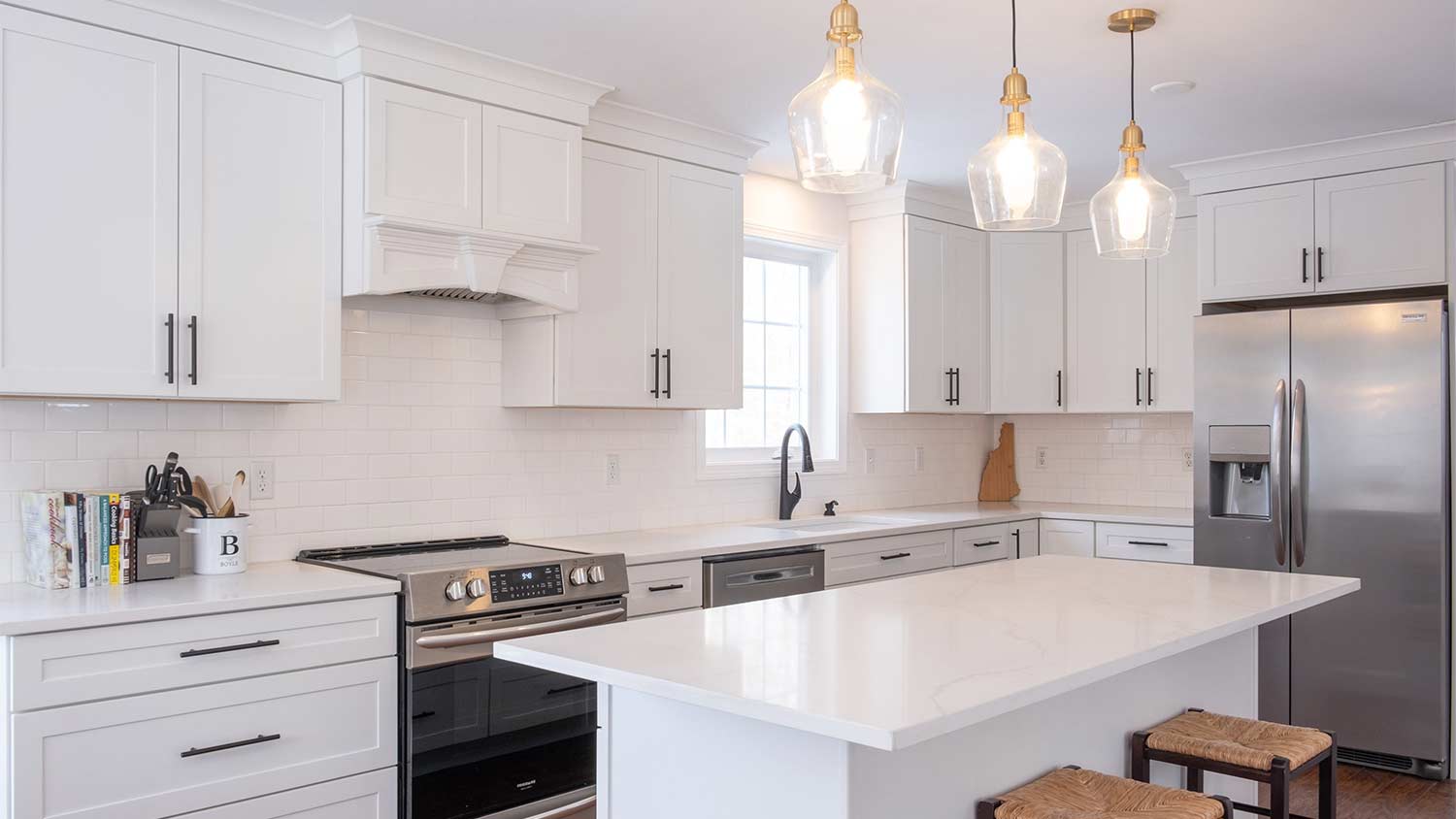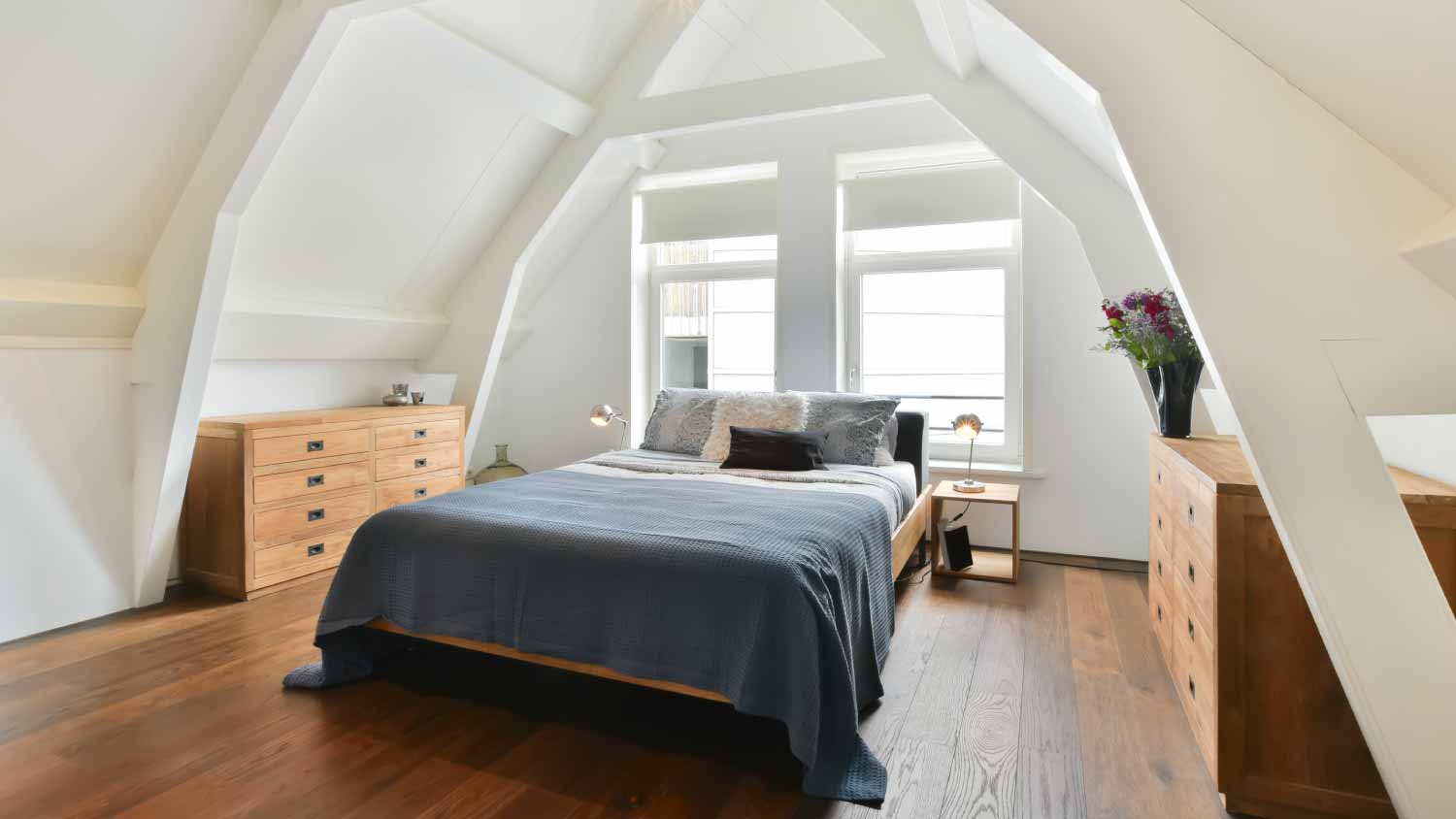Adding Kitchen Cabinets to the Ceiling: A DIY Guide
Make your kitchen cabinets more elegant and swoon-worthy


Adding kitchen cabinets to the ceiling creates a streamlined, custom look that can’t be beat. Yet, many homeowners have a considerable gap between the upper cabinets and the ceiling. Luckily, there are efficient and wallet-friendly ways to add kitchen cabinets to the ceiling to achieve a stylish look.
How to Prep for Adding Kitchen Cabinets to the Ceiling
Even if you’re not remodeling your entire kitchen, you still need to be prepared for construction and budget appropriately. Here are the steps to take before embarking on your cabinet extension project:
Hire a Cabinet Installation Pro
First, if you’re not planning to DIY this project, you’ll need to hire a cabinet installation company near you. Hiring a cabinet installation pro will help determine the cost and project timeline for adding kitchen cabinets to the ceiling, plus ensure the installation runs smoothly.
In addition, if you currently have soffits in the space between your cabinets and ceiling, you’ll need to hire an HVAC company to check and see whether the soffit houses any ductwork.
Gather Supplies
Next, you’ll need to obtain all the necessary materials and tools. You’ll also need to know where to put knobs and handles on kitchen cabinets to ensure a streamlined look throughout your kitchen. Depending on your design aesthetic, tools and supplies may include:
Plywood
Hardwood
Screws
Drill
Tape measure
Studs
Anchors
Crown molding
Cabinet lighting
Cabinet door fronts
Glass fronts
Paint
Paint brushes
Knobs
Handles
How to Add Kitchen Cabinets to the Ceiling

There are several ways to add kitchen cabinets to the ceiling. These methods include adding onto existing cabinets, stacking your cabinets, and adding bulkhead trim and crown molding. Below, we’ll cover the various ways to add kitchen cabinets to the ceiling:
Adding Bulkhead Trim and Crown Molding
Bulkhead trim is essentially a plain box that conceals the space between the cabinet and ceiling. Adding bulkhead trim and crown molding is the simplest and most cost-effective way to extend your cabinets to the ceiling.
You can DIY or hire a carpenter or a handyperson to build a bulkhead and secure it above the cabinet boxes.
Add crown molding between the bulkhead and the ceiling.
Paint the bulkhead and crown molding to match your current cabinets.
Adding on to Existing Cabinets
For this method, you'll need at least 8-foot-tall ceilings. You can add to your current kitchen cabinets without needing to replace the cabinets entirely.
Hire a local carpenter to extend your cabinet boxes and doors to the ceiling with solid wood or plywood.
Reface the cabinet doors so they are smooth, hiding any seams.
Paint the new cabinet boxes.
Paint the new cabinet doors and re-attach them.
Add crown molding to the space between the cabinets and the ceiling.
Stacking the Cabinets
Stacking cabinets is the process of adding another smaller cabinet on top of your current cabinets. In this case, the seam between the two cabinets is visible and part of the overall aesthetic. Typically, stacked cabinets work best in kitchens with at least 9-foot-tall ceilings. Here are the design choices for stacked cabinets:
Open Shelving
Adding open shelving cabinets is the easiest route for cabinet stacking. You’ll want to add a cabinet box with open fronts for this option. This way, you can showcase your decorative bowls and housewares—you may also want to add custom cabinet lighting.
Glass Cabinets
Glass front cabinets involve the same process as open shelving, except you’ll add glass inserts, which will keep your beautiful housewares behind a safe display. In addition, glass fronts provide a more polished look than open shelving. However, glass cabinet inserts will cost more than open shelving due to the custom nature and sizing of the inserts.
Closed Cabinets
As the name implies, closed cabinets are a great way to add storage to your kitchen while achieving the cabinet-to-the-ceiling look. You’ll need to pay for the cabinet box, cabinet faces, a type of cabinet hardware, and paint.
How to Maintain Your New Ceiling Cabinets

To enjoy your newly-added kitchen cabinets, you’ll want to keep them safe, secure, and clean. Here are some tips for caring for your elevated kitchen cabinets:
Regularly dust and clean them to keep the cabinets and glass in good working condition.
Organize and keep decorative wares clean and tidy if you opt for open shelving or glass-front cabinets.
Be careful about storing everyday items in your upper cabinets—they can be challenging to reach and pose a safety hazard if you’re not tall enough to get them. We recommend storing non-essential items, such as holiday wares, in the tallest spaces.
Enhance your cabinets by installing cabinet lighting, such as under-cabinet, strip, or motion-sensor lighting.
Why Should I Add Kitchen Cabinets to the Ceiling?
If you’re looking for a way to make your kitchen look brighter and airier, adding cabinets to the ceiling will instantly elevate your space and make your ceilings appear higher. Aside from giving your kitchen a higher-end look, other benefits include:
Increased storage space: You can showcase beautiful kitchenware or stash items behind closed doors.
Less renovation: You don’t need to renovate your entire kitchen (if you don’t want to) to achieve this look. And with kitchen remodel costs averaging $26,000, extending your cabinets to the ceiling is a stylish and cost-effective alternative.
Increases resale value: Your home's resale value will likely increase because the cost of extending cabinets isn’t as high as a complete remodel—yet you’re still benefiting from a newly-designed kitchen space.
Cost to Add Kitchen Cabinets to the Ceiling
You can expect the cost of kitchen cabinets to run between $50 and $450 per linear foot for labor and installation. You’ll also have to pay between $400 and $1,400 to paint kitchen cabinets.
DIY vs. Hiring a Pro
If you’re handy and have experience with carpentry skills, you can tackle adding kitchen cabinets to the ceiling yourself. Of course, you’ll need the necessary tools, materials, and time to construct custom cabinet boxes or bulkhead trim and crown molding. You can expect to pay between $170 and $210 for paint and supplies, around $2 to $3 per square foot for materials, and an additional $40 to $50 per cabinet door. Otherwise, we recommend hiring a cabinet installer in your area to tackle this project. That way, you can ensure the addition is made safely and efficiently.
Frequently Asked Questions
If your cabinets don’t reach the ceiling, you can extend them higher, adding visual interest, privacy, and storage space to your kitchen. Depending on the height of your ceiling, you may want to extend the structure of the cabinets and install longer doors to make each individual cabinet taller, or you could add additional cabinets above the existing ones. Either option is cheaper and easier than installing entirely new cabinets.
It depends on whether you buy pre-made stacked cabinets or construct them from scratch. If you build added cabinets from scratch, you can expect it to take several hours or days to build each one and then another two to three days for installation. Then, after painting your new cabinets, you should allow a few weeks for the paint to dry thoroughly before installing them over your existing cabinets.
No, and that’s why adding kitchen cabinets to the ceiling is popular! Whether you match the color of your existing cabinets or not, you can still paint your cabinet boxes with them attached to the wall—making this project much less invasive.
Yes, stacked cabinets, bulkhead trim, and crown molding are worth it. This look is not only customized and high-end, but you’ll also have the added benefit of extra storage space. And because you don’t need to remove your existing cabinets to achieve this look, you’ll save by not needing to complete a kitchen remodel—which could run between $15,000 and $40,000.





- Bathroom Remodeling
- Kitchen Remodeling
- Shower Installation
- Stair Installers
- Bathtub Installation
- Shower Door Installers
- Kitchen Design
- Bathroom Design Companies
- Storm Shelter Builders
- Pre-Made Cabinets
- Kitchen Refacing
- Bathtub Replacement
- Ceiling Tile Installation
- Suspended Ceiling Companies
- Residential Designers
- Stair Builders
- Remodel Designers
- Shower Enclosures
- Home Renovations
- Kitchen Renovations
- Garage Remodeling
- Grab Bar Installation
- Walk-In Tub Installers
- Tub to Shower Conversion
- Balcony Contractors










